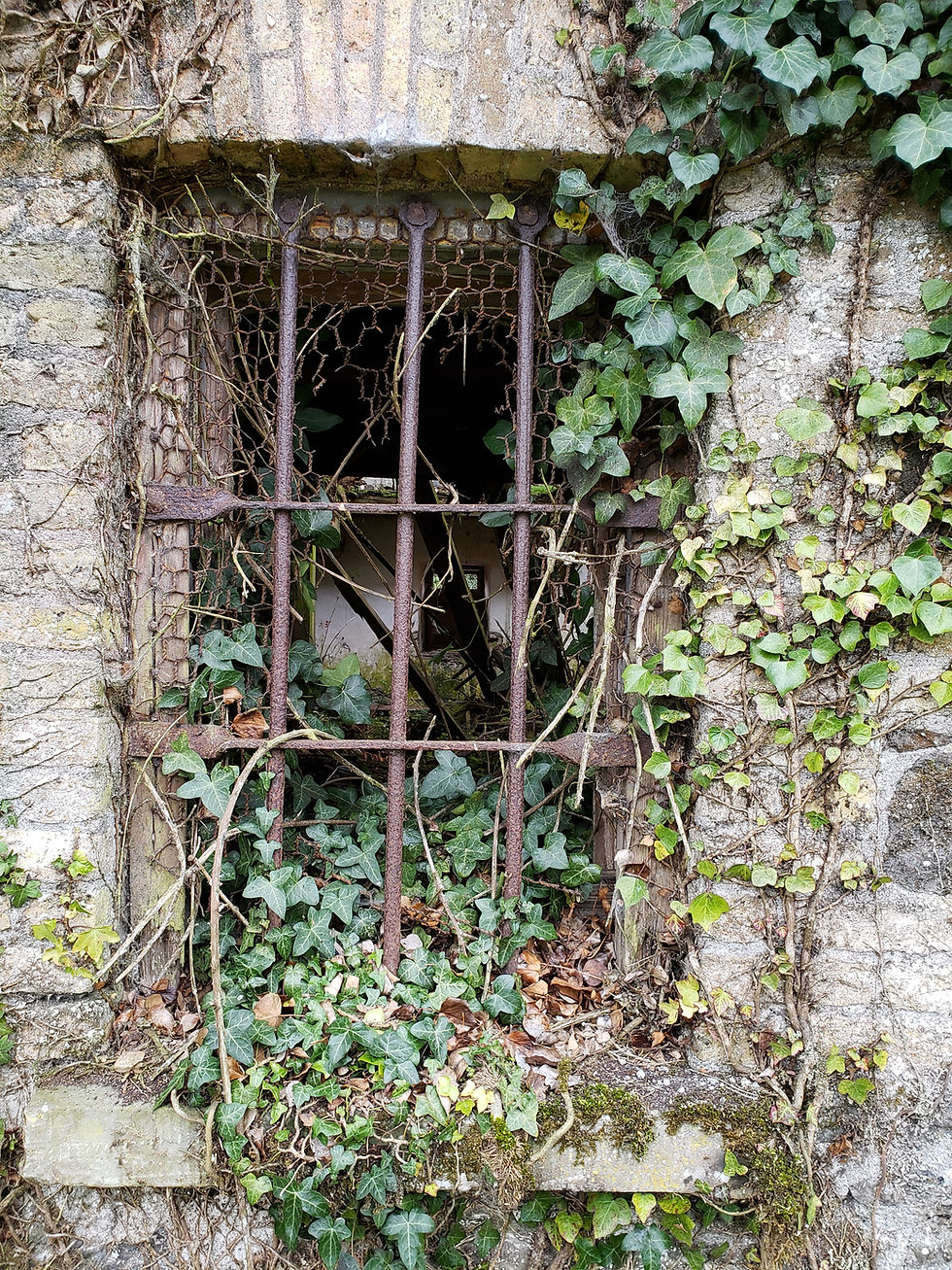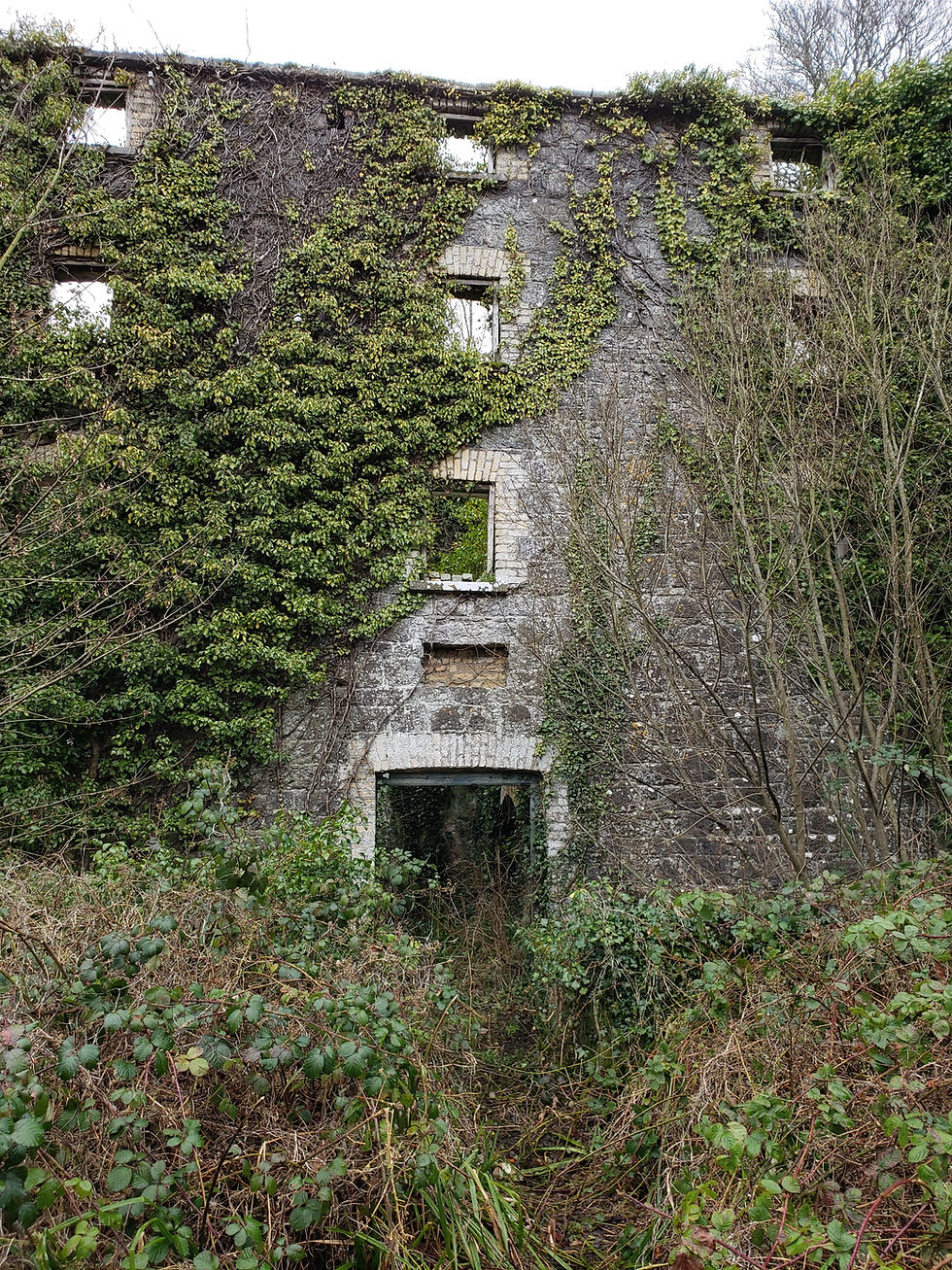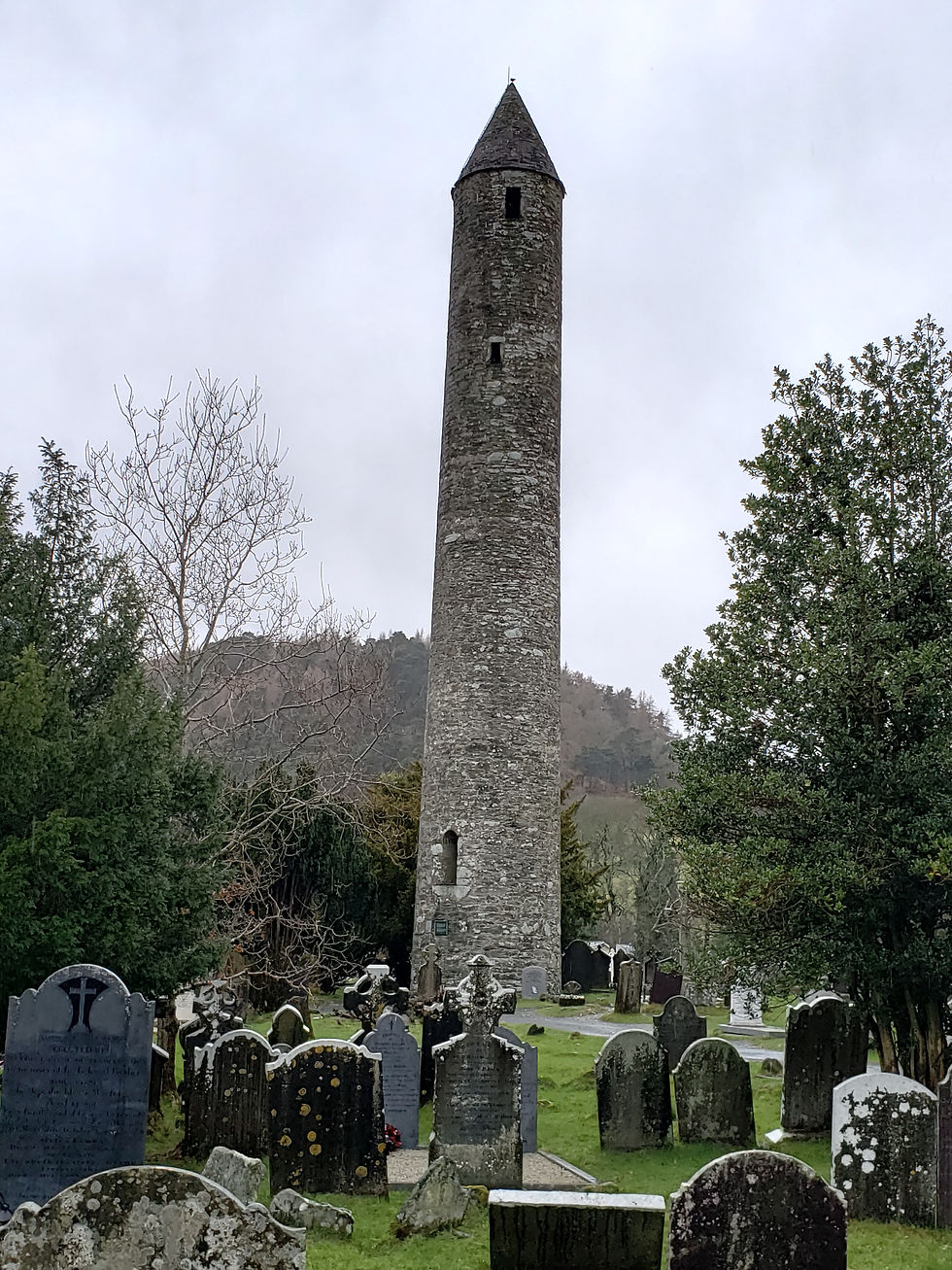From Birr to Glendalough Return to Dublin
- Dan

- Mar 9, 2020
- 6 min read
March 09th
I was on my way to a couple of castles that I heard about, when I came across this abandoned Mill. I could not go into this particular structure but across the river was another building that I assume was part of the entire factory that once was here.

Plant life seems to be engulfing the old building. It certainly adds such beauty.

Across the river, next to this old building, was what I assume is another part of the factory and this one I was able to enter.

One can only imagine the amount of activity that took place back in the day. These two buildings are huge. You can only imagine how many people it would take to build them let alone how many it would take to employ to work in them.

Cloghan Castle
I was told that I could drive in to see this castle, but could not go inside. I drove in about a kilometer and came to a locked gate. I had to park on the side, climb the gate and walk about half a kilometre in to the Castle. You are so beautiful walk into to the Castle.

This time it was not cows or horses that met me at the castle, but sheep. Lol

This castle was in pretty good shape and when I went around ro the side, there were lights on the inside. I am thinking that somebody must be living there. So not to invade their privacy I walked back out to the car.

I came across this castle by accident ... I was just driving by. It is called Clonony Castle. I cannot get inside as the gate is locked.

These remnants belong to Clonmacnoise Castle. There are many other ruins in this bit it was raining extremely hard and I had a long drive today so off I went.

After driving for about 2 hours, I ended up in Glendalough. This spot was the highlight of my day.
(The following information is taken from "visitwicklow.ie" ).
Glendalough, also known as the city of the seven churches, was enclosed within a circular wall. The arch is built with roman style columns meaning the stones were cut specifically to scale and they held themselves up without the need for mortar. If even one of the stones were to be removed the entire structure would collapse. The very picturesque Gateway has the distinction of being Ireland’s only surviving example of a medieval gateway to an early monastic city. This structure was originally two-storied with two fine granite arches.

Glendalogh is renowned for an Early Medieval monastic settlement founded in the 6th century by St Kevin.
The Cathedral is the largest of the seven churches in Glendalough. It was built in several phases from the 10th through the early 13th century. Large mica schist stones, which form the foundation up to the height of the west doorway, were re-used from an earlier smaller church.

(Information taken from Wikipedia) Kevin, a descendant of one of the ruling families in Leinster, studied as a boy under the care of three holy men, Eoghan, Lochan, and Eanna. During this time, he went to Glendalough. He was to return later, with a small group of monks to found a monastery where the 'two rivers form a confluence'. Kevin's writings discuss his fighting "knights" at Glendalough; scholars today believe this refers to his process of self-examination and his personal temptations.[1] His fame as a holy man spread and he attracted numerous followers. He died in about 618, traditionally on 3 June. For the next six centuries, Glendalough flourished and the Irish Annals contain references to the deaths of abbots and raids on the settlement.[2]
Circa 1042, oak timber from Glendalough was used to build the second-longest Viking longship recorded (circa 30 m). A modern replica of that ship was built in 2004 and is currently located in Roskilde, Denmark.[3] At the Synod of Rath Breasail in 1111, Glendalough was designated as one of the two dioceses of North Leinster. The Book of Glendalough was written there about 1131. St. Laurence O'Toole, born in 1128, became Abbot of Glendalough and was well known for his sanctity and hospitality. Even after his appointment as Archbishop of Dublin in 1162, he returned occasionally to Glendalough, to the solitude of St. Kevin's Bed. He died in Eu, in Normandy in 1180.[2] In 1176, the Annals of Tigernach report that Glendalough was 'plundered by the foreigners'. In 1214, the dioceses of Glendalough and Dublin were united. From that time onwards, the cultural and ecclesiastical status of Glendalough diminished. The destruction of the settlement by English forces in 1398 left it a ruin but it continued as a church of local importance and a place of pilgrimage.
Glendalough is on the 1598 map "A Modern Depiction of Ireland, One of the British Isles"[4] by Abraham Ortelius as "Glandalag". Descriptions of Glendalough from the 18th and 19th centuries include references to occasions of "riotous assembly" on the feast of St. Kevin on 3 June.[2]
The present remains in Glendalough tell only a small part of its story. The monastery in its heyday included workshops, areas for manuscript writing and copying, guest houses, an infirmary, farm buildings and dwellings for both the monks and a large lay population. The buildings which survive probably date from between the 10th and 12th centuries.[2

The following information is taken from "visitwicklow.ie"
St. Kevin’s Church better known as St. Kevin’s Kitchen is a nave-and-chancel church of the 12th century. It is called St Kevin’s kitchen because people believed that the bell tower was a chimney to a kitchen but really no food was ever cooked there. This stone-roofed building originally had a nave only, with entrance at the west end and a small round-headed window in the east gable. The belfry with its conical cap and four small windows rises from the west end of the stone roof in the form of a miniature round tower.

The Priest's House
The name derives from an 18th century practice of bringing the priests to be readied for burial and also burying priests in the floor. According to local folk tradition, the clay from the floor of a building held a cure for toothache. The clay was simply rubbed on the jaw in order to gain relief. The original use for this room is uncertain. Conflicting theories suggest that it might have been erected over the grave of St Kevin himself or just housed some relics of the saint.

The most famous of all the landmarks in Glendalough is the Round Tower which stands 33 meters above the ground. It was built almost 1000 years ago by the monks of St. Kevin’s monastery. The conical roof had to be replaced in 1876 when it was struck by lightning. The towers were called “Cloigtheach”, meaning bell tower, suggesting their main use. The towers were sometimes used as a place of refuge for monks when the monastery was under attack. They also served as both as lookout posts and as beacons for approaching monks and pilgrims

St. Kevin’s Cross is a fine example of a plain cross remarkably carved from a single granite stone. The arms of the cross are over a metre in length. The imperforate cross stands about 2.5m tall. It may have marked the boundary of the cemetery in which stands the priests’ house. This cross is a fine example of how St Patrick trying to help the once pagan people of Ireland acclimate to Christianity. This was done by combining the cross with the circle representing the sun, because the pagans worshipped the sun and moon. A local legend surrounding St. Kevin’s Cross says that anyone who can wrap their arms around the entire width of the cross body and close the circle by touching fingertips will have their wishes granted. So when you visit be sure to try your luck see if all your wishes will be granted.

I spotted these headstones supporting each other.

I was hoping to be able to hike up to some falls that I saw on the map, but due to time I was unable to. I was making my way to Dublin when I end up driving right by the Falls I was planning on hiking to. Now that was a coincidence. This is called Glenmacnass Waterfall.

The rain consistently fell all day, but it still created a beautiful mountainscape photo op. This area is known as Wicklow Mountains National Park


Took an hour to drive through Dublin, rush hour. Made it to my next night and had to have some good ol' Irish fish 'n chips. Ahhhh ... and a cold brew to go with it. Down the hatch. LOL









Comments